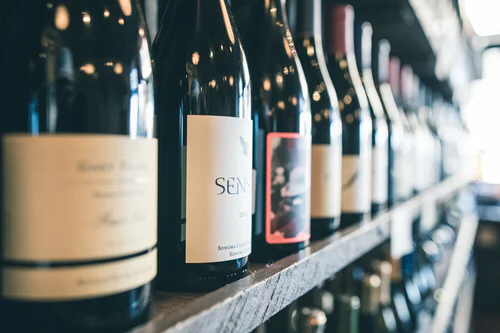How Millennials’ Wine Preferences Differ from Boomers
John Kell
Carlo Rossi jugs of wine have always been a hit with boomers but dismissed by millennials. So E. & J. Gallo did something about it.
Late in 2017, the world’s largest family-owned winery debuted Carlo Rossi in 750-milliliter bottles – the first time it ever sold the brand in that format – because low-priced bulk wine didn’t resonate with millennials. E. & J. Gallo also shifted the styles of wine toward trendier Pink Moscato Sangria and Fiesta Sangria and away from Old World wines like Burgundy and Chianti.
“The next generation wants flavorful wine,” says Stephanie Gallo, E. & J. Gallo’s chief marketing officer. “We are evolving our brand to appeal to them.”
Americans between the ages of 21 and 34 – a group that includes some Generation Z but is mostly millennial – purchase only 10% of wine sold at retail stores but account for 17% of the buying population, Nielsen data shows.
“This is an issue for the wine category,” says Danny Brager, senior vice president of Nielsen’s beverage alcohol practice. “The heartland of wine is boomers and seniors.”
Boomers are responsible for the largest growth period in wine sales in U.S. history. As they aged into adulthood, wine seemed fancy, especially compared with low-calorie beers and the cheap stuff liquor makers were selling. This demographic also benefited from a healthy economy, giving them the purchasing power to buy expensive wines.
But cost-conscious millennials are still bruised from the 2008 financial crisis and are delaying buying homes, getting married, and, yes, even the leap to buying fine wines. On a per-serving basis, wine is more expensive than beer and spirits. That makes it tough for millennials to stomach a $30 bottle of wine with roughly five servings (and oxidizes), while a similarly priced bottle of Maker’s Mark serves 25 and has a long shelf life.
Lately, wine has been hurt by stiffer competition from craft brewers and new threats like cannabis and nonalcoholic beverages. But the biggest problem is the resurgent liquor industry.
Beer’s market share in the U.S. total beverage alcohol market has ebbed from 56% in 1999 to 45.5% last year, according to data from spirits industry advocate the Distilled Spirits Council. Liquor makers have captured 9.1 percentage points of beer’s share losses, versus just 1.4 for wine.
“Spirits have done a pretty good job of pivoting and watching trends,” Brager says.

Among styles, millennials favor Pinot Noir, Moscato, sparking wines, and of course, rosé. But they are shunning Chardonnay, White Zinfandel, and well, pretty much everything else.
Winemakers need a quick turnaround because by 2027, millennials are projected to surpass Gen X as the largest fine-wine-consuming demographic.
“What I love about millennials is they don’t view wine as a formal beverage but as a casual social beverage,” Gallo says.
Gallo wants winemakers to move away from elitist wine marketing. She also believes the industry could do a better job marketing and making wines for a more diverse population.
E. & J. Gallo has made some strides with millennials, scoring a notable hit with the red blend Apothic. It also sells three brands in cans: Apothic, Dark Horse, and Barefoot Spritzers. That has opened up new distribution opportunities, as canned wines can be more easily sold at sports stadiums, outdoor concert venues, and beach parties.
Of course, millennials aren’t just old enough to be drinking wine – they make it too.
“Wine can be intimidating,” says Colleen Hardy, who cofounded Living Roots Wine & Co. with her Australian husband, Sebastian, both millennials. “But I do think our generation is curious, and we want to try new things and know about the people behind our products.”
Living Roots is an “urban winery.” It takes grapes grown in the Finger Lakes region to a warehouse in Rochester, N.Y., where they are pressed in a winery within city limits. Though missing the sweeping vineyard views, Living Roots has a tasting room that is more accessible to urban millennials who have moved back into the city.
And while wine remains the core focus, Living Roots collaborates with other local alcoholic beverage companies to generate buzz. The winery worked with Fifth Frame Brewing on a New England IPA brewed with the winery’s Pinot Gris juice. Down the road, it hopes to work with Black Button Distilling on a brandy.
Hampton Water, like most rosés, targets millennials. The brand’s name evokes the Hamptons lifestyle, but at $25 per bottle, it is cheaper than jetting off to the trendy New York beaches.
“If you are 25 and walk into a liquor store and you are going to spend $80 on wine, you better know you will like it,” says Hampton Water founder Jesse Bongiovi. “I think that’s where the rosé category has set itself apart. You can get a really good bottle for about $20.”
Both Hardy and Bongiovi say social media is key to developing loyalty for their brands. Living Roots claims 61% of their Instagram followers are under the age of 35. Hampton Water uses social media, especially Instagram Stories, to engage with fans and showcase the people behind the brand. (It may help that Bongiovi is the son of legendary rocker Jon Bon Jovi.)
“Wine has got all the attributes that a millennial wants: They want craft, they want clarity of ingredients,” says Rob McMillan, executive vice president and founder of Silicon Valley Bank Wine Division. “It is on the table if we start to market it.”








